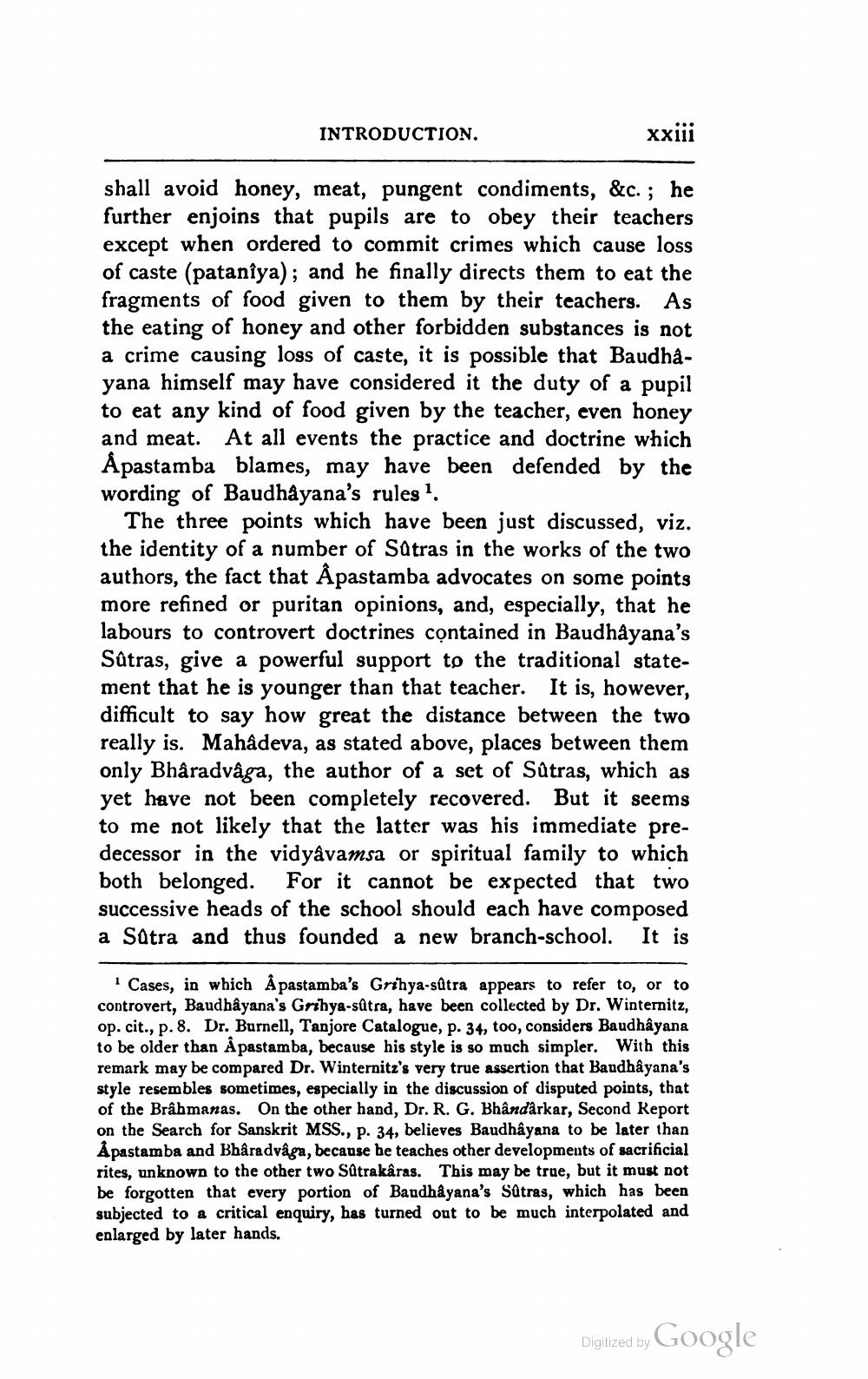________________
INTRODUCTION.
xxiii
shall avoid honey, meat, pungent condiments, &c.; he further enjoins that pupils are to obey their teachers except when ordered to commit crimes which cause loss of caste (pataniya); and he finally directs them to eat the fragments of food given to them by their teachers. As the eating of honey and other forbidden substances is not a crime causing loss of caste, it is possible that Baudhayana himself may have considered it the duty of a pupil to eat any kind of food given by the teacher, even honey and meat. At all events the practice and doctrine which Apastamba blames, may have been defended by the wording of Baudhayana's rules 1.
The three points which have been just discussed, viz. the identity of a number of Satras in the works of the two authors, the fact that Åpastamba advocates on some points more refined or puritan opinions, and, especially, that he labours to controvert doctrines contained in Baudhảyana's Sûtras, give a powerful support to the traditional statement that he is younger than that teacher. It is, however, difficult to say how great the distance between the two really is. Mahadeva, as stated above, places between them only Bhâradvåga, the author of a set of Sûtras, which as yet have not been completely recovered. But it seems to me not likely that the latter was his immediate predecessor in the vidyâvamsa or spiritual family to which both belonged. For it cannot be expected that two successive heads of the school should each have composed a Satra and thus founded a new branch-school. It is
Cases, in which Å pastamba's Grihya-sâtra appears to refer to, or to controvert, Baudhayana's Grihya-sâtra, have been collected by Dr. Winternitz, op. cit., p. 8. Dr. Burnell, Tanjore Catalogue, p. 34, too, considers Baudhayana to be older than À pastamba, because his style is so much simpler. With this remark may be compared Dr. Winternitz's very true assertion that Baudhâyana's style resembles sometimes, especially in the discussion of disputed points, that of the Brâhmanas. On the other hand, Dr. R. G. Bhândàrkar, Second Report on the Search for Sanskrit MSS., p. 34, believes Baudhayana to be later than Åpastamba and Bhâradväga, because he teaches other developments of sacrificial rites, unknown to the other two Satrakâras. This may be true, but it must not be forgotten that every portion of Bandhåyana's Satras, which has been subjected to a critical enquiry, has turned out to be much interpolated and enlarged by later hands.
Digitized by Google




